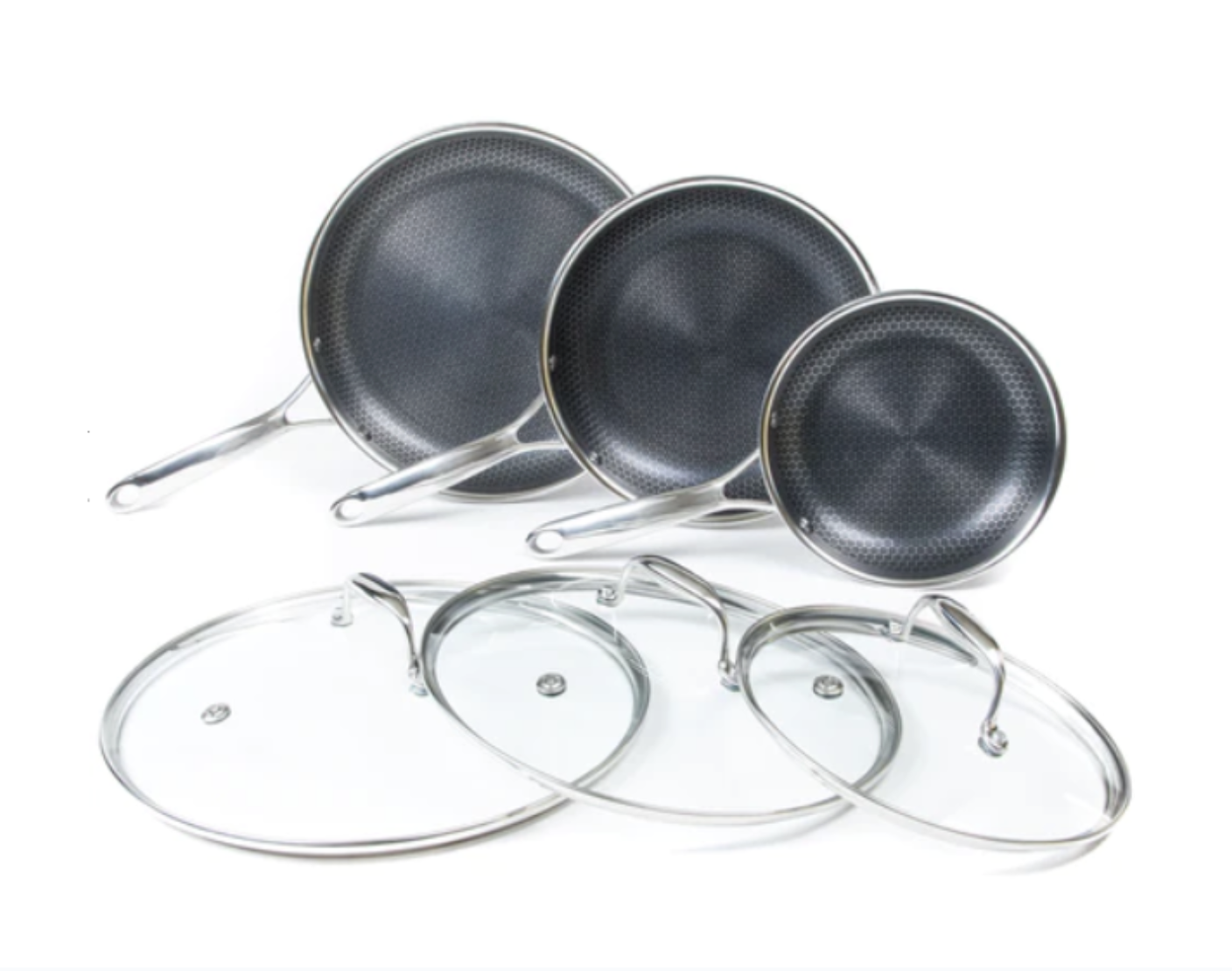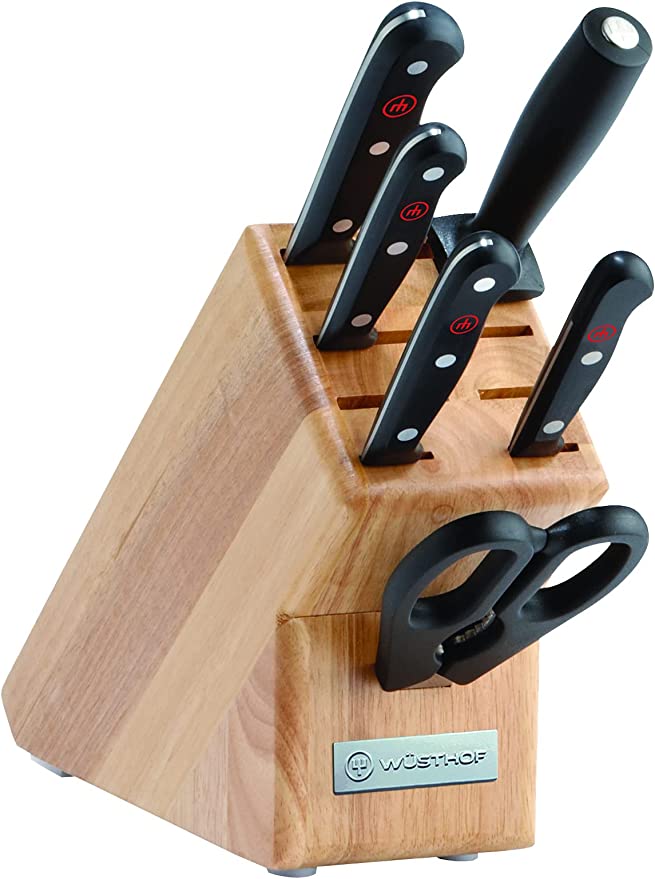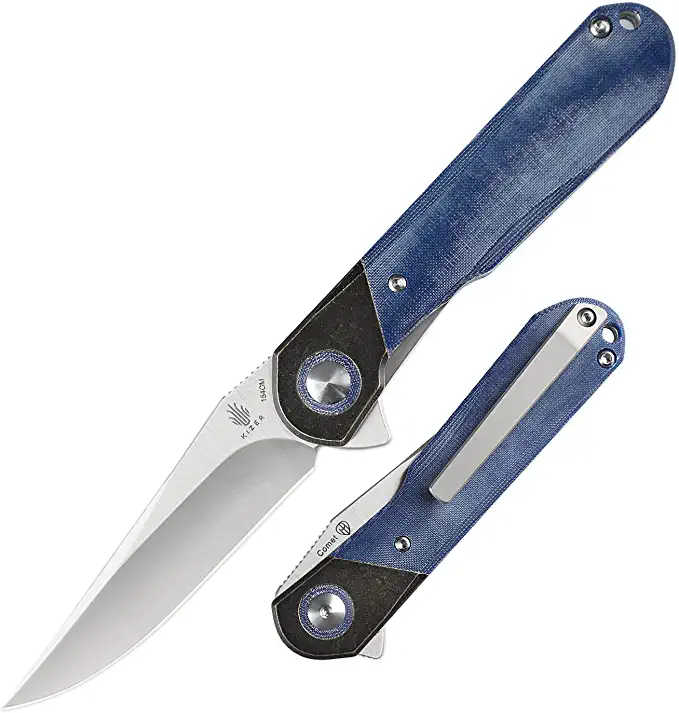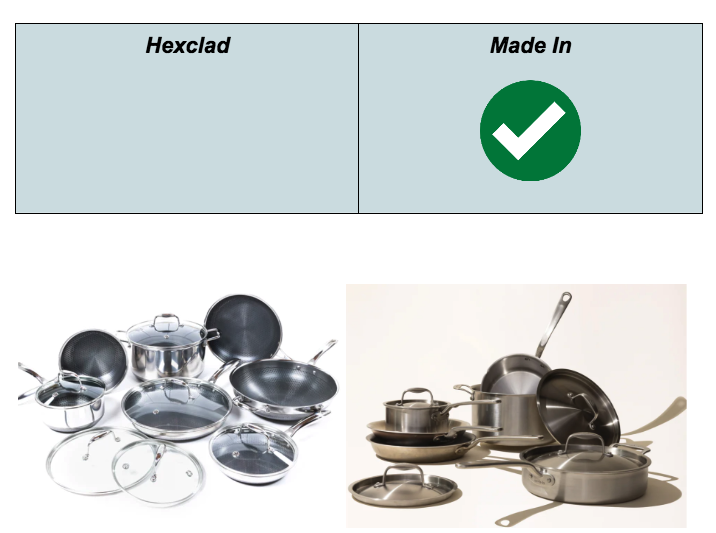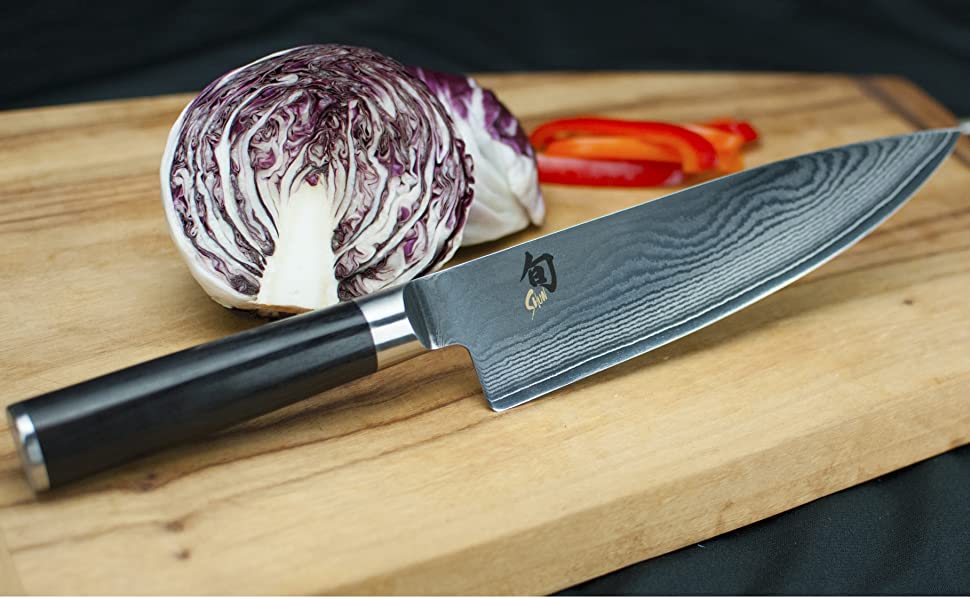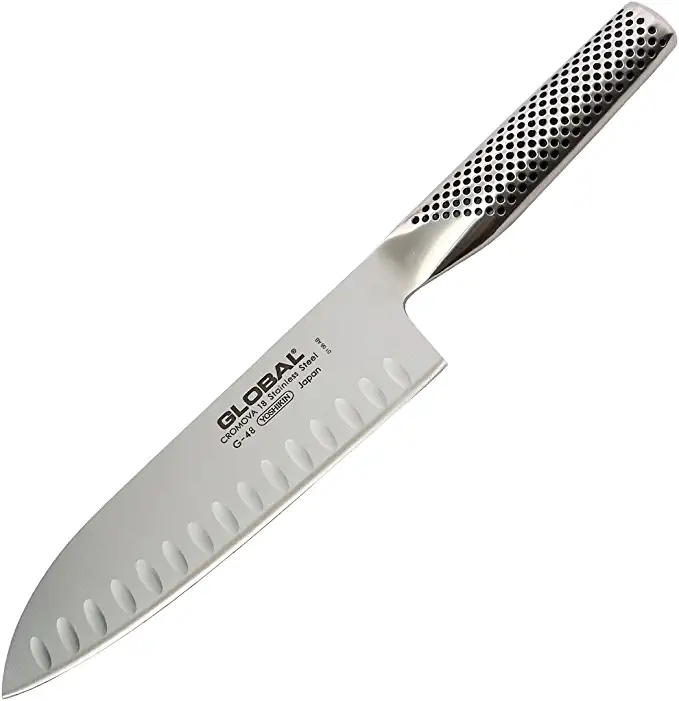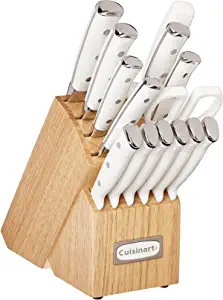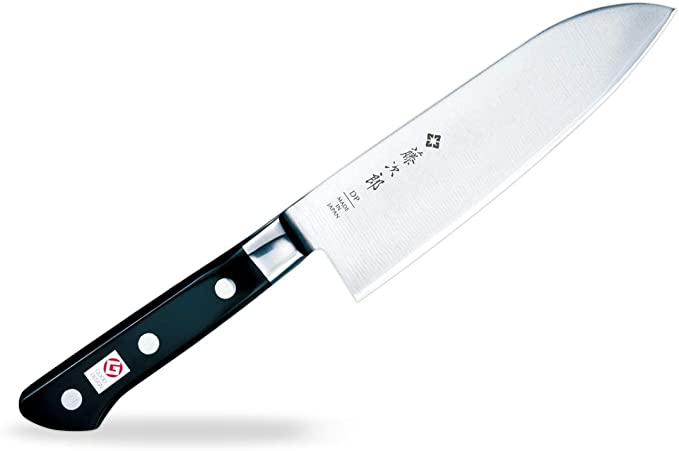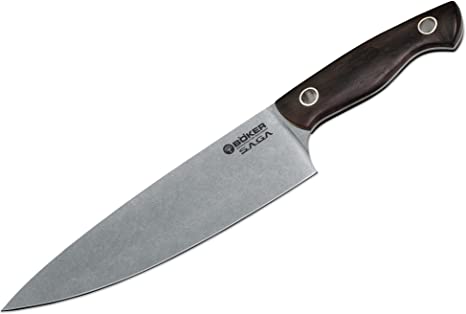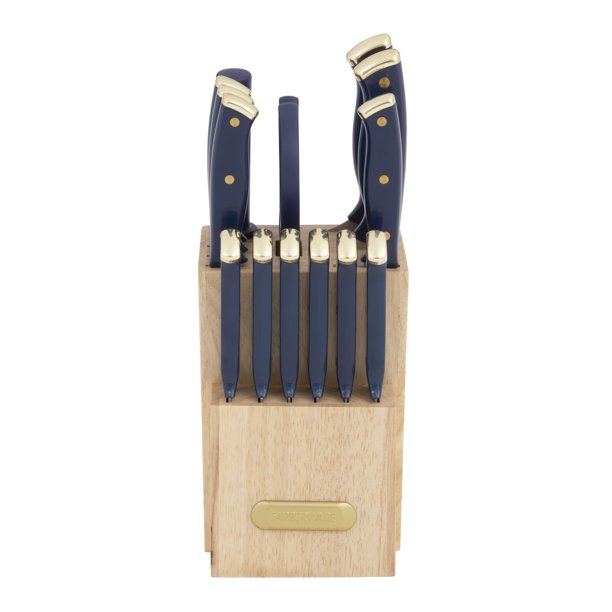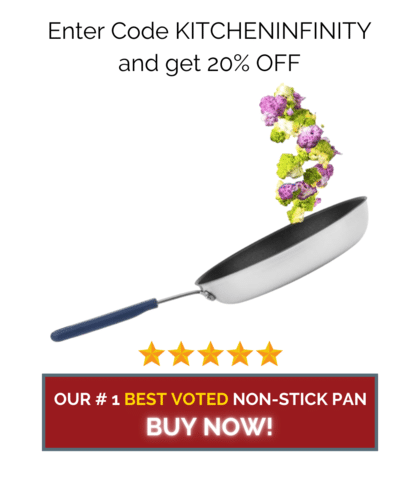Misen cookware is the top pick in this comparison with Made In cookware. Although, both Made In and Misen cookware offer a range of terrific cookware that is long lasting, durable, and worth the money. Not only do these cookware brands offer excellent longevity and quality, but they also aid in your overall cooking experience and make it a lot more fun than usual.
With over 2 decades of professional cooking experience and dedicating over 50 hours of in-depth research, I have tried, tested, and reviewed top cookware brands including Made In and Misen so you can make a well-informed decision when purchasing your cookware of choice. In addition, I also have 30 years of experience cooking and comparing quality kitchenware that stands the test of time and is also budget-friendly.
In this article we will compare two of the leading cookware brands: Made In and Misen. You will be able to see how both brands stack up in terms of quality, efficiency, design and construction, as well as affordability. You can also read more about Hexclad vs. All-Clad cookware. If you are interested, keep on reading!
Made In
Launched in 2016, Made In boasts rich knowledge and a variety of cookware thanks to one of its founders, Jack Kalick’s kitchen supply business that is over a 100 years old. It stands out as a kitchenware company as it reaches out directly to its consumers without the need of a middleman. This also keeps their prices affordable for the average consumer.
Although it is still a luxury brand, Made In ensures that it has cookware options that can cater to all kinds of home cooks as well as professional chefs without them having to break the bank.
They offer a variety of cookware sets and individual pieces with a mix of 5-ply stainless steel, 5-ply nonstick pots and pans, and premium carbon steel cookware.
Misen
Misen is an excellent example of a brand that came to being thanks to people’s choice and contribution. After a successful Kickstarter campaign that raised over $1.2 million in 2018, Misen cookware started with its introduction of the successful kitchen knife design.
As a cookware brand, it focuses on sleek design, excellent quality and durability, and an affordable price tag that is within common reach. Like Made In, Misen also is an affordable brand that mainly operates through its own online website. It manufactures all its products in China.
Key Features: Made In vs. Misen
|
Key Features |
Made In |
Misen |
|
Tie |
Tie |
|
Win |
|
|
Tie |
Tie |
|
Win |
|
|
Tie |
Tie |
|
Win |
|
|
Win |
1. Design & Construction
Both Made In and Misen offer a premium 5-ply stainless steel clad construction for its cookware. Both feature pots and pans that come with three layers of excellent quality aluminum layers pressed between stainless steel on both sides. This type of construction is also referred to as full-clad or multi-clad and is applauded for excellent heat control.
Made In’s cookware uses 18/10 stainless steel on the interior cooking surface and a sturdy 430 stainless steel on the bottom. On the other hand, Misen utilizes 18/10 stainless steel on both its interior surface and exterior layer. But, if you are wondering what this means, 18/10 stainless steel simply refers to a rust-resistant, durable, cooking surface that maintains its glow over time.
Made In cookware features a 5-ply construction for its non-stick variety but if you are worried about the toxic fumes, you will be glad to hear that it also adds a multi-layer PFOA-free nonstick coating to the interior surface. Made In also offers a carbon steel collection for food varieties that are required to cook over extremely high heat.
Misen utilizes commercial grade, premium aluminum base on the PFOA-free nonstick cookware with bonded steel plates to ensure that it works perfectly on your induction stovetops.
When it comes to design, both Made In and Misen cookware feature a brushed stainless steel exterior and interior that oozes modern, chic appeal.
Misen pots and pans have a thicker base (3mm) than Made In cookware (2.7 mm). While this may not seem like a major difference, it does affect the weight of each pan.
Made In also features brushed stainless steel handles that match the overall aesthetic of the pan, while Misen cookware showcases handles that are polished stainless steel for a shiny look.
2. Heat Conduction
Heat conduction refers to how well your cookware can heat up when sat on the burner. I achieved the final results through a simple test between the Made In Stainless Clad Frying Pan and the Misen Stainless Skillet.
After pouring 3 cups of cold water in each pan, I set the burner on high and placed both on top. Using a stopwatch, I gauged how long it took for each pan to get the water inside to simmer.
The Made In pan started boiling the water after 2.5 minutes while the Misen pan did the same with only an additional 5 seconds. The air bubbles were even and spread out in both pans which signaled even heat distribution and conduction for both Made In and Misen.

3. Heat Retention
This refers to how well your pots or pans can maintain heat levels even after they are removed from the heat source. High quality cookware will maintain heat levels for a while to keep your food warm for longer without having to heat it up again in the microwave.
After the previous experiment, I simply removed the pans from the burner and drained out the water. After 7-10 minutes, I placed my hand on the surface of each pan and noticed that the Made In pan retained its heat for longer while the Misen pan had completely cooled down.
4. Oven-Safety
Both Made In and Misen cookware is oven safe, but the highest temperature each can withstand varies.
Made In cookware’s stainless steel collection is oven-safe up to 800*F, while the non-stick collection is safe up to 500*F. Its pan lids are also oven safe up to 350*F.
Misen Stainless steel pans are oven-safe up to 500*F and its nonstick collection can withstand up to 450*F. Avoid placing this cookware near the heat source of the broiler.

5. Stove Compatibility
If you own an induction oven, you will require cookware that consists of ferrous metals to operate on this type of cooktop. Both Made In and Misen cookware is fully induction compatible and can also work on other traditional cooktops.
6. Aesthetics
It doesn’t matter how expensive and durable your cookware is, if it doesn’t feel right or looks misplaced inside your kitchen, you may not want to use it quite often. Aesthetic appeal is quite an important element for any cookware and pots and pans that look good also feel good when you cook with them.
Made In cookware offers a range of variety including nonstick, stainless steel, and carbon steel but it still lacks the sleek, ultra-modern aesthetics of Misen cookware. Misen pans also feature steeper sidewalls that not only look good but provide more space and better grip for ingredients.
Misen is also a consumer favorite as it came into being thanks to people’s funding, which is why it reigns supreme when it comes to aesthetics and popularity.
7. Affordability
This is the most crucial factor in determining what cookware you want to purchase. While both Made In and Misen are affordable brands, Made In is by no means a cheap brand and if you are thinking of buying a set or an individual piece, prepare to spend a lot of money.
Misen, on the other hand, is about 25% to 35% less expensive than Made In and since it came about as a result of people’s funding, it is a lot more affordable than Made In, whilst providing nearly the same benefits.
Pros and Cons: Made In vs. Misen Cookware
|
Made In |
|
| Pros |
Cons |
|
|
|
|
|
|
|
|
|
|
|
Misen |
|
| Pros |
Cons |
|
|
|
|
|
|
|
|
FAQs for Made In vs. Misen Cookware
Is Made In cookware made in the USA?
Yes, Made In cookware is made in the USA. Most of its pans, pots, and knives are manufactured in the States, though some pieces may be constructed in France or Italy.
How long do misen pans last?
Misen pans are built to last a lifetime. All of their stainless steel collections are made with 5-ply steel aluminum which is sturdy and resilient enough to last a lifetime.
Is Made In Cookware toxic?
No, Made In cookware is not toxic. In fact, it is FDA approved and also stamped as safe by the U.S. Consumer Safety Commision. Its nonstick cookware also does not have a self-depleting layer, which means that they last longer so long as you care for them properly.
Can I put my Misen pan in the oven?
Yes, you can put your Misen pan in the oven. All Misen pots and pans are oven-safe. Simply avoid placing them too close to the heat source or the broiler in your oven.
Are Misen pans scratch resistant?
Yes, Misen pans are scratch resistant thanks to the aluminum or aluminum-alloy base which is processed to be stronger than stainless steel and also produces an ideal nonstick cooking surface which is scratch resistant and non-reactive to acidic foods.
Which Brand is Better? Our Verdict
Misen cookware takes the lead in this race, thanks to its outstanding cooking benefits, aesthetic appeal, as well as an impressively affordable price tag. While this is not to say that Made In isn’t worth the money; as you can see from the above comparison, Made In certainly wins in some categories but when gauged overall, it doesn’t make sense to pay more for minimal differences in just heat retention.
Although Made In features greater variety and is backed by renowned cooking experts and chefs, Misen cookware is simply a consumer favorite and has only improved ever since it stepped into the cookware market.
At the end of the day, whichever cookware you decide to choose depends on your preferences, budget, etc. Both Made In and Misen are excellent cookware brands that offer phenomenal benefits and longevity.
Top Picks for Made In Cookware
- Best Stainless Steel: Made In Stainless Steel Set (6 PC)
- Best for Searing: Blue Carbon Steel Grill Frying Pan
- Best Versatility: Enameled Cast Iron Dutch Oven
Top Picks for Caraway Cookware
- Best Overall: Misen Carbon Steel Wok
- Best Cast Iron: Misen Dutch Oven
- Best Value Set: Misen Nonstick Cookware (12 PC)



